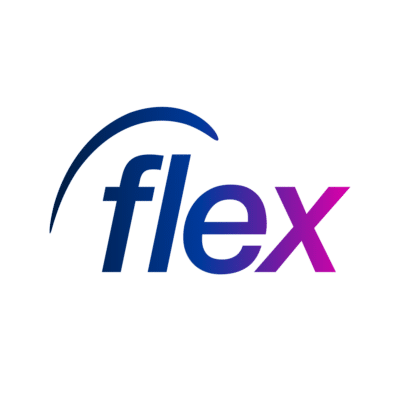
For many businesses, recruitment costs, or employee costs, can be hard to define — especially when it comes to contingent labor. While the headline figures for agency fees and advertising are easy to track, the true costs of recruitment often remain hidden. In reality, these hidden expenses can significantly impact budgets, operations, and overall productivity.
The question is: Do you really know how much recruitment is costing your business?
Why most businesses underestimate recruitment costs
Recruitment costs for contingent staff are often poorly understood because they’re dispersed across multiple areas of the business. Finance teams may focus on agency fees, HR on onboarding, and operations on overtime costs, but few organizations take a holistic view – often, there just isn’t the time.
Without a unified approach, across all teams, businesses fail to see the full financial and operational impact of recruitment, including:
- Vacancy costs: Lost productivity and revenue from unfilled positions.
- Turnover costs: Expenses associated with frequent rehiring due to high attrition rates.
- Operational inefficiencies: Time and resources wasted on manual processes, fragmented systems, and not sourcing candidates from the right places.
Then there are the additional metrics, aside from attrition rates, such as cost-per-hire, time-to-hire, source-of-hire, and application to hire.
The result? Recruitment becomes a hidden drain on profitability.
Breaking down the costs of contingent recruitment
1. Direct costs
These are the most visible and typically include:
- Agency fees: A significant portion of recruitment budgets, especially for businesses that rely on third-party suppliers to source talent.
- Job advertising: Costs associated with posting roles on job boards or running digital campaigns.
- Onboarding: Time and resources spent on compliance checks, training, and systems setup.
Food for thought: The average cost to hire an employee in the US is between $4,000 – $5,000, which includes both internal and external costs such as job adverts and recruitment agency fees.
2. Indirect costs
These costs are harder to quantify but just as impactful:
- Vacancy costs: Every day a position remains unfilled leads to lost productivity, increased workload for existing staff, and potential revenue loss. Studies show that vacancy costs can run into hundreds or thousands of dollars per day, depending on the role.
- Overtime and burnout: Permanent staff often cover for vacancies, leading to higher overtime costs and a risk of burnout, which can trigger additional turnover.
- Low fulfillment rates: Delays in filling shifts or roles result in disrupted operations and unhappy customers, especially in industries like logistics and hospitality.
3. Hidden administrative costs
Manual workflows, such as managing multiple agencies, tracking compliance, or chasing timesheets, add up quickly. These inefficiencies not only increase costs but also divert valuable time from strategic priorities.
There are solutions though – for example a carefully tailored Vendor Management System (VMS) can ease the burden of tracking those multiple agencies, and help businesses calculate labour cost effectively.
Subscribe to our newsletter
Stay ahead of employment updates and workforce management tips. Subscribe to our newsletter for expert insights straight to your inbox.
How to take control of recruitment costs
1. Understand the total cost of recruitment
Start by mapping out all direct and indirect costs associated with contingent recruitment. This includes not just agency fees and onboarding, but also vacancy costs, administrative inefficiencies, and turnover expenses.
2. Leverage data to drive decisions
Data is key to identifying inefficiencies and opportunities for improvement. Workforce analytics can reveal:
- Roles with the highest turnover.
- Shifts or locations with consistent fulfillment issues.
- Roles which take the longest to fill.
- Spending patterns across agencies and roles.
3. Centralize vendor management
A Vendor Management System (VMS) consolidates all contingent workforce data into a single platform, providing full visibility into spend, performance, and compliance. This allows businesses to standardize processes, negotiate better terms with suppliers, better manage their performance, and track how to reduce cost per hire.
4. Automate processes
Technology can streamline time-consuming tasks like compliance tracking, invoicing, and shift allocation. Automation reduces administrative costs and frees up HR and operations teams to focus on higher-value activities.
5. Retain quality talent
The employee cost of turnover is often heavily underestimated, as an expense, when it comes to recruitment. Retaining top talent by offering fair pay, clear communication from the outset (right from the initial job description), and flexibility can dramatically reduce rehiring costs.
The role of technology in reducing recruitment costs
Technology is transforming how businesses manage contingent labor by providing visibility, control, and efficiency. Platforms like Flex Plus centralize all recruitment processes in one place, enabling organizations to:
- Track and manage costs in real time.
- Optimize shift fulfillment with smart-matching technology.
- Gain insights into workforce performance and spending patterns.
By integrating data and automating workflows, businesses can reduce recruitment costs by up to 40% while improving productivity and worker satisfaction.
The bottom line on reducing recruitment costs
Many businesses underestimate the true cost of recruitment, especially for contingent staff. From vacancy costs, to turnover and administrative inefficiencies, the financial impact often far exceeds the visible expenses.
Taking control of recruitment costs starts with understanding the total cost picture, leveraging data for smarter decisions, and centralizing management of all processes through technology. By adopting a proactive, tech-enabled approach, businesses can optimize their recruitment, reduce costs, and realize the full potential of their contingent workforce.
So, how much is recruitment really costing your business?
Why not get in touch with us today and see what savings you could make?
Book a demo
Discover a staffing solution tailored to suit your business requirements








